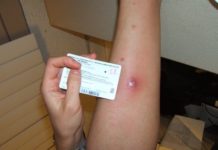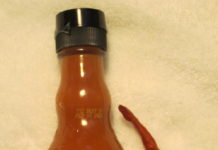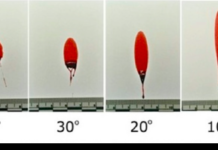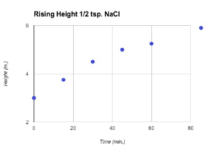Emily Kallaher & Seth Carter; Farnsley Middle School (Louisville, KY)
The octopus has been a mystery for as long as humans have studied them. The biggest mystery? Octopus arm regeneration.
In a 2013 study led by Letizia Zullo, a researcher at the Department of Neuroscience and Brain Technologies in Genoa, Italy, it was found that the main reason octopi can regenerate arms is the protein acetylcholinesterase (AChE). The discovery may hold the promise of learning more about how we might better regenerate our own diseased or lost limbs.
According to the Amputee Coalition, an organization created to promote limb loss prevention, nearly 2 million people are living with limb loss in the US.
The study required the capture of six healthy (eight-armed) female octopi (Octopus Vulgaris) off of the Italian Coast. They put the octopi under anesthesia and removed one to two centimeters off of each arm. According to their notes, the octopi woke up and acted as if nothing had happened. After about three days, the animal’s biochemicals cued the arm to start its regeneration process. The group of cells around the wound started to heal itself. The signals were also the cause of the “hook like structure” that appeared at the tip of the arm after the second week. At day 28, these signs disappeared and through the next 100 days or so, the arm slowly grew back and had the same strength of the original. It was as good as new. But how did it happen?
Octopi regenerate lost arms just like starfish. Unlike starfish, octopus arms can’t grow into a new octopus. It is very rare for octopi to have fewer than eight—at least partial—arms. As soon as the arm is injured, it immediately begins its regeneration process.
One of the main components of octopus arm regeneration is AChE. According to Wikapedia.com, ACHe is a protein that lets us to send signals from one neurotransmitter to another (from the brain to the wound and vice versa), or allows us to feel pain.
One of the things that helped the regeneration process was the octopi’s ability to increase and decrease their specific AChE levels. In the octopi’s uninjured sample tissue, the AChE levels stayed normal and only in the nerve areas. In the damaged arms, the AChE levels stayed relatively low. That is, until the third week where the levels dramatically increase. During this period, the suckers and color-changing-ability (chromatophores) were just starting to grow back. The levels seemed to slowly dampen by day 42 and were back to normal by day 130 with newly regenerated arm tips.
These findings don’t solve the mystery of this advanced tissue regeneration. But these creatures could be a stepping stone to the ability to regrow lost tissue. They also point to the improvement in molecular medical work.
“AChE protein may have an important influence in the process of arm regeneration,” the researchers noted in their research. They also noted that “It could be considered as a potential target to promote or regulate the regenerative process.” It would help so many people gain back lost tissues, arms, legs and more. Who wants a new arm? Suckers are optional.
Emily Kallaher and Seth Carter

This work is licensed under a Creative Commons Attribution-NonCommercial-NoDerivs 3.0 Unported License














Nicely done!